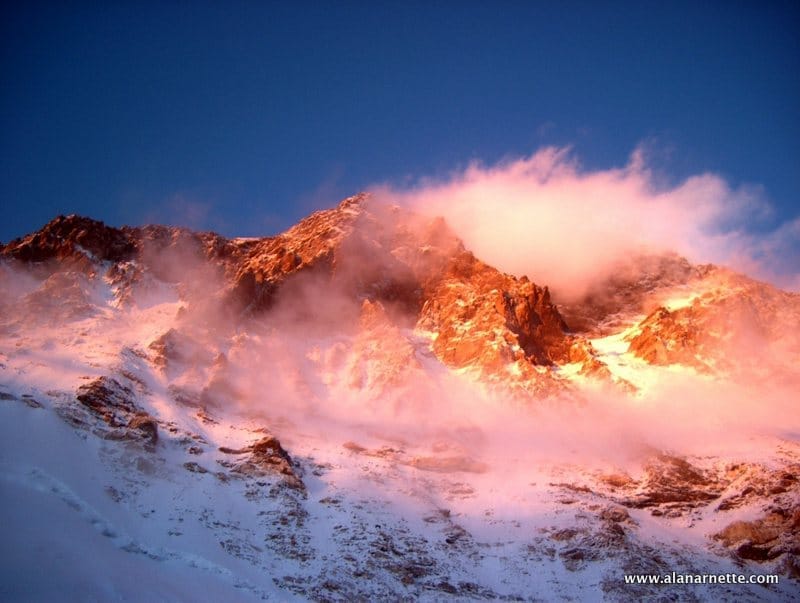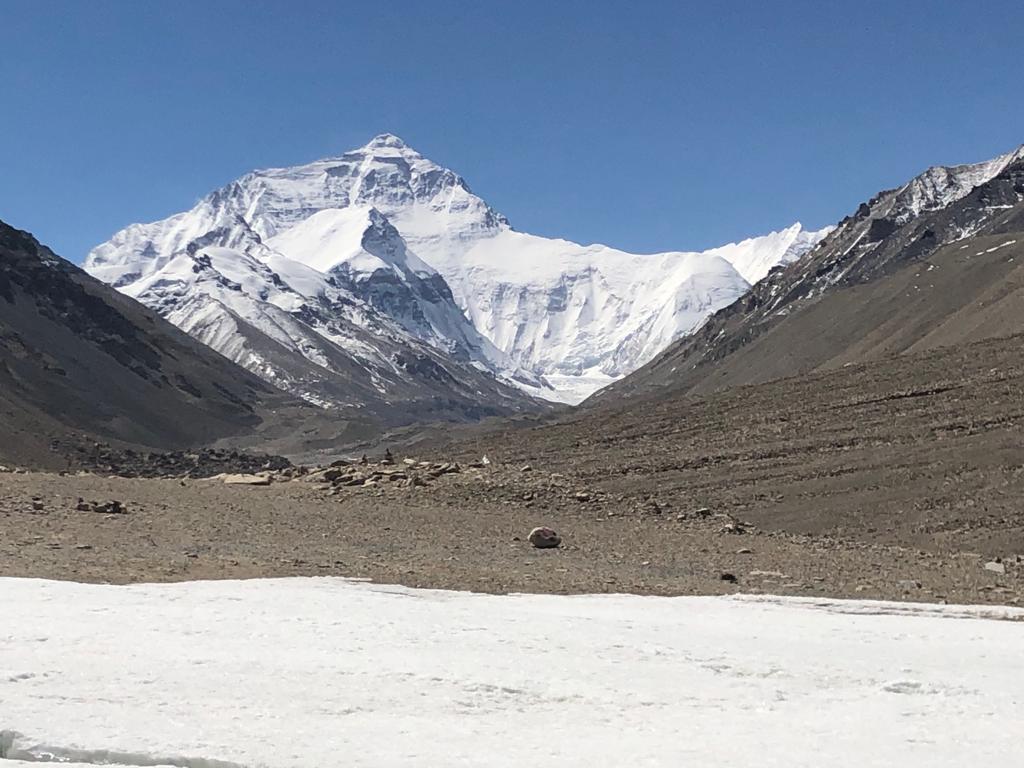All is good in the Khumbu, according to climbers and trekkers there. Most Everest and Nepal climbing teams start their journey at Lukla, These days, it seems that many climbing teams have taken helicopters to Lukla or Namche. Either flight method results in the start of a life-changing trek in the Khumbu, but you need to get to Lukla first.
Lukla – an “interesting” Airport

For those Nepal climbers and trekkers, their Khumbu journey usually begins in Lukla with a bit of anxiety.
Often called “the world’s most dangerous airport,” it’s a reputation I’m not 100% sure fits. However, Lukla is certainly in the top 10 according to most aviation lists.
That said, there have been seven crashes since 2000, killing over 50 passengers and crew. However, to keep these tragedies in perspective, thousands of passengers are safely flown each year between Lukla and Kathmandu.
There are several challenges flying in and out of Lukla, beginning with the only runway, which sits at the top of a 2,000-foot cliff and ends where a high mountain wall begins. There is no opportunity for a missed landing or equipment failure. And there is more.
First, there is no radar or electronic landing assistance, so pilots are strictly on visual flight rules, aka VFR. This simply means they must talk among themselves during landing and taking-off and have limited assistance from any form of air traffic control.
Second is the weather. Lukla is at 9,400 feet, surrounded by the low peaks of the Himalayan Mountain Range. The airport is often shrouded in low clouds, rain or snow, which shut down visibility, and that’s an issue in a VFR environment!
Third is the short runway. At the Tenzing-Hillary Airport (the formal name), the runway is short, only 1,510 feet long and 66 feet wide (460m by 20 m) at a 12% slope. Compare this to Heathrow where a runway is 12,801-feet x 164-feet (3,902m x 50m )
It takes a special aircraft to land and take off in such a short area. Known as short-takeoff and landing or STOL planes, the fleet of Twin Otters and Dorniers flown by Yeti Airlines or Sita Air fly climbers and trekkers for about USD$140 one way.
The Journey Begins
When you finally arrive at the decision to climb Everest, a big decision is whether to go north or south, i.e., Tibet or Nepal. At some point, most people select Nepal for many reasons. And at another point, it dawns on you that means flying from Kathmandu to Lukla, allegedly the most dangerous airport in the world.
There are other options, like taking an 8-hour car ride to Jiri and another five days hiking to reach Lukla, but those who are climbing Everest usually take the flight, regardless of the risk. After all, they are climbing Everest!
Back in Kathmandu, you have kind of recovered from jet lag, made the usual tourist circuit of the Boudhanath and Pashupatinath Temples, Durbar Square, Swaymbhunath, aka Monkey Temple and met your teammates. After dinner, your guide announces, “OK, up at 3:30 for a 4:00 am ride to the airport for our flight to Lukla. Have your bags downstairs, in your trekking garb and ready to go. It’s now real!”
You smile nervously as you know she speaks the truth.
You return to your room and repack your duffles for the fourth time since landing two days earlier. It’s 11:00 o’clock, and you are not tired, but tomorrow is a big day – fly to Lukla and trek to Phakding. You make one more WhatsApp call to your spouse or friend and crawl into bed. Damn, it’s hot tonight, you say out loud to no one as you do the crocodile roll in your bed.
You set the alarm but asked the hotel to call you at 3, a judgment error since you finally fell asleep at 2. Nonetheless, out of bed and to the shower, hoping the water has heated up enough for you to have your last tepid shower for the next six weeks. It’s not. After a bird bath, you look in the mirror. Your face and hair are a mess – like come off a tour of duty in … well, it doesn’t matter.
You drag one of your duffles downstairs until, amazingly, the same nice guy who hauled your bags to your room is in the lobby – at 3:37 am – and implores you to drop everything. He will get this one and your other bag on the 3rd floor. By now, any sense of pride evaporates, and you nod in agreement and stumble off to find the instant coffee.
The ride to the domestic terminal of the airport is quiet. Your teammates and you are in a stupor. Your seasoned guide looks like he just left a GQ shoot—not a hair out-of-place and clean-shaven. How does the ***K do this? Anyway, after half an hour, you arrive at the airport.
Your confidence takes a hit when you are asked to stand on a huge scale along with your duffles to see if you and your teammates collectively weigh too much for the flight. You hold in your stomach, hoping it will help – it doesn’t. 136 kg – all in. Your brain can’t calculate if this is good or bad. The guy weighing you grunts to get off the scale for the next passenger.
Next in this gauntlet is waiting in the departure area. The TV monitors play a cruel game of flight departures—you know this is a joke played on foreigners as the Sherpas nod off enjoying a moment of relaxation—there’s a lesson here. Just when you think the 15-minute by 15-minute delay game is just plain fun for the airlines, a call comes to hurry up and get on the bus!

Five hours after your wake-up call, you settle in your seat, which is smaller than a 4th-grade school desk. The flight attendant comes by and offers a single piece of hard candy and a wad of cotton. You hold the cotton in your hand, lost in translation.
The twin prop engines wine to a roar, and suddenly, the cotton wads make sense. Just as the sun rises, your Twin Otter STOL aircraft takes off.
The flight to Lukla is short—30 minutes. For once, you wish it was longer. Leaving the Kathmandu Valley, you have a bird’ s-eye view—literally—of Nepal’s rolling terrain. You marvel at how crop fields are carved out of steep hillsides and homes and roads built on mountain ridges. This shows the resilience of these people, and you sink in your seat with admiration.
You strain to see the big peaks but later learn you are flying towards 20,000 and 23,000-foot peaks – nothing to scoff at. Then you feel the plane slow, the props squeal as they fight for power in the thin air. You instinctively tug at your seatbelt. After all, what an embarrassment to be injured landing in Lukla on your way to Everest. You pull out the smartphone just in case there is something to … you close your eyes.
You glance in the cockpit for reassurance. One pilot has his hand on the yoke, and both pilots have their hands on the throttle—normal procedure, but your heart rate increases. In your mind, you know these pilots have done this hundreds of times, this month alone, but your anxiety heightens. You look over at one of the Sherpas flying with you. He is asleep.
The whine of the twin engines is defining. Where is that damn cotton? Then, in a blink, the Otter’s wheels meet the ground hard—an aircraft carrier landing. The plane bounces. The engine roars as the props reverse. You glance out a side window to see a blur of motion. Will we stop in time? You lunge forward as the brakes bring the small aircraft to a halt. And then hard back in your seat as it makes the right turn to the tarmac. Everyone applauds. Smiles of relief are spontaneous and involuntary.
Welcome to Lukla!
Tomorrow, we will continue the trek hiking to Namche and the infamous Namche Hill!
This is a video I took from my 2008 landing:
And from a helicopter landing last October 2018 when I climbed Island Peak:
Climb On!
Alan
Memories are Everything
The Podcast on alanarnette.com
You can listen to #everest2024 podcasts on Spotify, Apple Podcast, Breaker, Google Podcasts, Pocket Casts, RadioPublic, Anchor, and more. Just search for “alan arnette” on your favorite podcast platform.
Preparing for Everest is more than Training
If you dream of climbing mountains but are unsure how to start or reach your next level, from a Colorado 14er to Rainier, Everest, or even K2, we can help. Summit Coach is a consulting service that helps aspiring climbers worldwide achieve their goals through a personalized set of consulting services based on Alan Arnette’s 30 years of high-altitude mountain experience and 30 years as a business executive. Please see our prices and services on the Summit Coach website.





